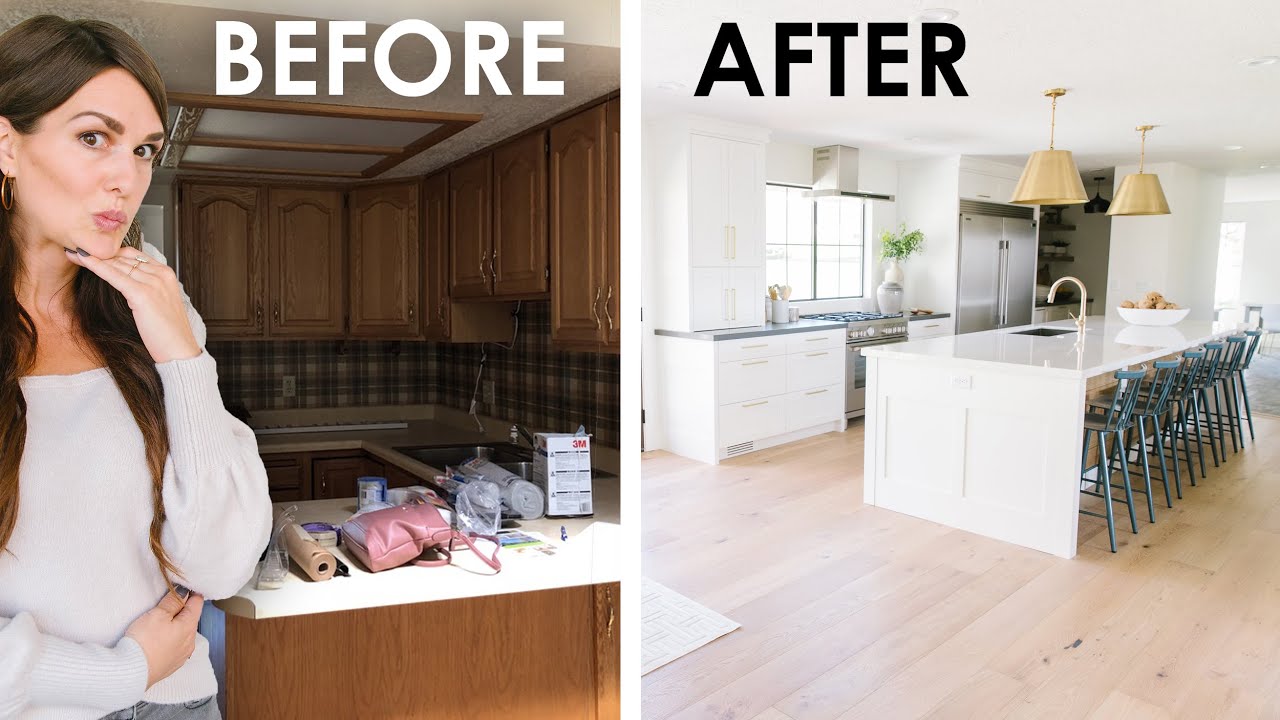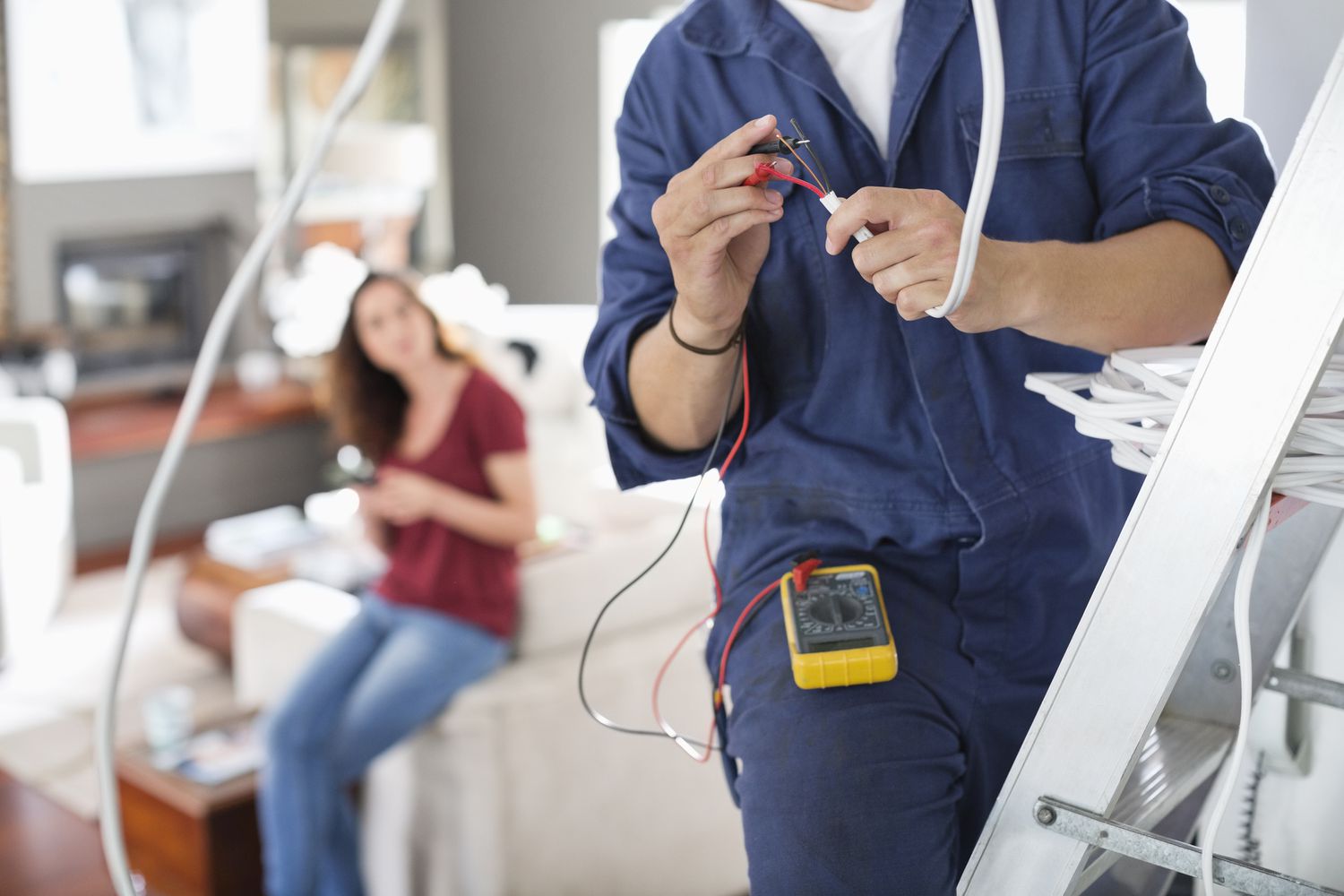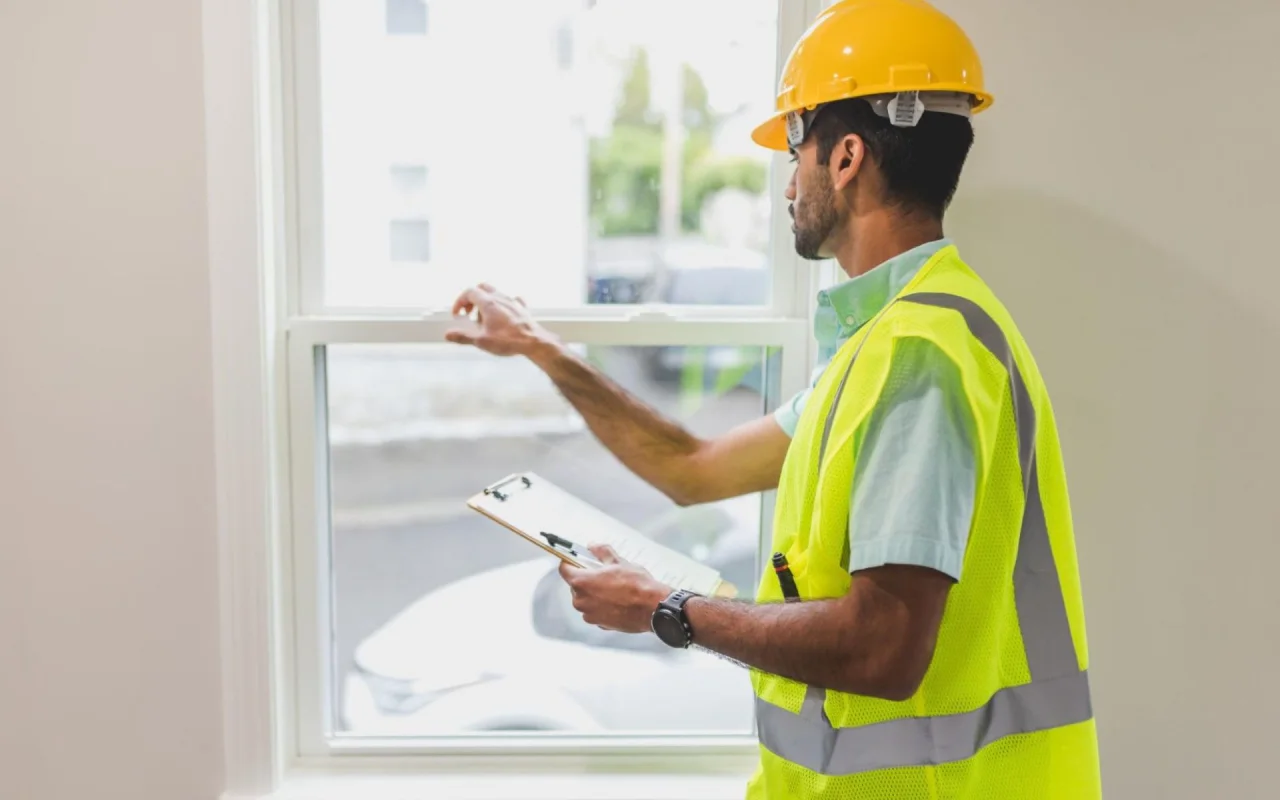Home>Home Maintenance>How To Negotiate After A Home Inspection


Home Maintenance
How To Negotiate After A Home Inspection
Modified: March 6, 2024
Learn how to effectively negotiate and address issues that arise during a home inspection. Discover expert tips and strategies for successful home maintenance.
(Many of the links in this article redirect to a specific reviewed product. Your purchase of these products through affiliate links helps to generate commission for Storables.com, at no extra cost. Learn more)
Introduction
Welcome to the world of home inspections, an essential step in the home buying process. A home inspection is a thorough examination of a property’s condition, typically conducted by a licensed professional, to identify any potential issues or repairs that may be needed. Once the inspection is completed, you will receive a detailed report outlining the findings.
While the inspection report serves as a valuable resource for understanding the condition of the property, it also plays a crucial role in negotiations between the buyer and seller. This is where your negotiation skills come into play, as you navigate the process of addressing repair requests based on the inspection findings.
In this article, we will guide you through the steps of negotiating repairs, helping you leverage the inspection report to your advantage. With the right approach, you can successfully reach a mutually beneficial agreement with the seller, ensuring the home is in the best possible condition before finalizing the deal.
Before diving into the negotiation process, it’s important to have a solid understanding of the inspection report. Let’s explore this in more detail in the next section.
Key Takeaways:
- Prioritize essential repairs by focusing on safety and functionality, and be open to compromise to reach a fair agreement with the seller.
- Gather quotes for repairs to support your negotiation, and communicate effectively to present your case and respond to sellers’ counteroffers.
Understanding the Home Inspection Report
After the home inspection is completed, the inspector will provide you with a detailed report that outlines the findings and identifies any areas of concern. Understanding this report is crucial as it will help you determine which repairs to address during the negotiation process.
The home inspection report typically includes information about the structure, foundation, roof, electrical systems, plumbing, HVAC systems, and other aspects of the property. It may also include photographs and diagrams to provide visual evidence of the issues found.
When reviewing the report, pay close attention to any major or safety-related concerns. These might include issues like structural damage, roof leaks, faulty electrical wiring, plumbing leaks, or HVAC malfunctions. These are the types of issues that should be prioritized during negotiations as they can have a significant impact on the overall safety and value of the property.
It’s important to note that not all items listed in the report are necessarily deal-breakers. Some items may be minor and easily addressed by the buyer without any significant expense. Others may be considered normal wear and tear for a property of the age and condition being inspected.
Take the time to go through the report thoroughly, making note of any concerns or questions you may have. It can be helpful to consult with your real estate agent or a qualified contractor to gain a better understanding of the severity and potential costs associated with the identified issues.
By understanding the home inspection report, you will be better prepared to evaluate the findings and determine which repairs to prioritize during the negotiation process. This will allow you to approach the negotiations with confidence and make informed decisions about the repairs that are necessary for the property.
Evaluating the Inspection Findings
Once you have thoroughly reviewed the home inspection report, the next step is to evaluate the findings. This involves assessing the severity of each issue, determining the potential impact on the property, and estimating the cost of repairs.
Start by categorizing the findings into different levels of severity. Identify any major or safety-related concerns that require immediate attention, such as a leaking roof or electrical hazards. These issues should be prioritized during negotiations as they directly impact the safety and livability of the property.
Next, consider the potential impact of each issue on the property. Some problems, though not necessarily safety hazards, may still have a significant effect on the functionality, value, or future maintenance of the home. For example, a cracked foundation may not pose an immediate threat but could lead to costly repairs and affect the stability of the structure in the long run.
Estimating the cost of repairs is another crucial part of evaluating the inspection findings. While you may not have the expertise to provide an accurate estimate, you can gather rough estimates from contractors or industry professionals. This will help you determine the potential financial implications of addressing each issue.
During the evaluation process, keep in mind that not all repairs should be treated equally. Consider the age and condition of the property, as well as any upgrades or renovations made by the seller. Some minor issues that fall within the normal wear and tear category may not warrant significant negotiations.
By evaluating the inspection findings, you will have a clearer picture of the overall condition of the property and be able to prioritize the repairs that are most critical. This evaluation will form the basis for developing a negotiation strategy, which we will discuss in the next section.
Prioritizing the Repairs
Once you have evaluated the inspection findings and identified the various repairs that need to be addressed, the next step is to prioritize them. Prioritization is essential in order to focus your negotiation efforts and ensure that the most crucial repairs are addressed first.
Start by categorizing the repairs into different priority levels. Consider the severity of each issue, the potential impact on the property, and the estimated cost of repairs. Typically, repairs that pose safety hazards or significant functional issues should be given the highest priority. These may include issues like electrical problems, plumbing leaks, or structural damage.
Next, consider the repairs that may have a direct impact on the value of the property. This includes issues that can affect the overall condition or marketability of the home, such as a damaged roof, outdated electrical systems, or plumbing problems.
After addressing the high-priority repairs, you can focus on the less critical issues. These may include cosmetic or aesthetic upgrades that are not as crucial for the functionality or safety of the property.
Consider the age of the home and its current condition when prioritizing repairs. Older homes may naturally have more wear and tear, so it may be more reasonable to prioritize repairs that address maintenance issues rather than expecting the property to be in perfect condition.
It’s important to note that while you can request repairs during negotiations, the seller is not obligated to address all of them. By prioritizing the repairs, you can approach the negotiation process with clarity and focus, ensuring that you are addressing the most vital issues first.
Keep in mind that negotiation is a give-and-take process. Be prepared to make concessions and negotiate with the seller for a fair agreement that benefits both parties. With well-prioritized repairs, you can navigate the negotiation process more effectively and increase the chances of reaching a mutually satisfactory outcome.
Gathering Quotes for Repairs
Once you have prioritized the repairs based on the home inspection findings, the next step is to gather quotes for the necessary repairs. This is an important part of the negotiation process as it allows you to accurately estimate the costs involved and present evidence of the repair expenses to the seller.
Start by researching and contacting reputable contractors or repair professionals who specialize in the areas identified in the inspection report. Obtain multiple quotes to compare prices, ensuring that you get a fair assessment of the repair costs. It’s important to note that the quotes you gather should be realistic and based on the actual condition of the property.
When requesting quotes, provide the contractors with detailed information regarding the repairs needed. Share relevant sections of the home inspection report to give them a clear understanding of the issues that need attention. This will help the contractors provide accurate and comprehensive quotes.
While gathering quotes, be sure to ask the contractors about their experience, credentials, and any warranties or guarantees they offer. This will help you assess their professionalism and determine if they are the right fit for the job. Remember, hiring reputable and qualified professionals is essential to ensure the repairs are done properly and to minimize any future issues.
When you have obtained quotes for the repairs, compile the information in a clear and organized manner. This will be valuable documentation to support your negotiation efforts. It demonstrates to the seller the actual cost of the repairs and provides a basis for your requests during the negotiation process.
Keep in mind that the quotes you gather may be used as a starting point for negotiation. The seller may choose to address the repairs themselves or offer a credit or reduction in the sale price instead. Be prepared to discuss and negotiate the terms based on the quotes and the overall negotiation strategy you have developed.
Gathering quotes for repairs ensures that you have a realistic understanding of the costs involved. Armed with this information, you can confidently approach the negotiation process and work towards reaching a fair and amicable agreement with the seller.
Read more: How To Negotiate Home Repairs With A Seller
Assessing the Cost-Benefit Analysis
As you navigate the negotiation process based on the inspection findings and gathered repair quotes, it’s important to conduct a cost-benefit analysis for each repair. This analysis will help you determine the value of addressing the repairs and whether the associated costs are justified.
Start by considering the potential benefits of completing the repairs. Will addressing a particular issue enhance the safety, functionality, or value of the property? For example, repairing a leaky roof may prevent further damage to the home’s interior and increase its marketability.
Next, assess the costs of the repairs. Compare the quotes you gathered for each repair with your budget and the overall value of the property. Consider the potential return on investment and whether the repairs are essential or simply cosmetic upgrades.
It’s important to weigh the costs and benefits against each other. Some repairs may have a minimal impact on the property’s value, while others may significantly improve its condition. Be sure to prioritize repairs that offer the best balance between cost and benefit.
Additionally, consider the long-term implications of each repair. Will addressing a particular issue prevent further damage or costly repairs in the future? Investing in quality repairs now may save you money and headaches down the line.
During the cost-benefit analysis, also take into account any concessions or accommodations the seller may be willing to make. They may agree to cover a portion of the repair costs or offer a reduction in the sale price to compensate for the needed repairs. Evaluate these options and determine if they provide a reasonable solution.
Ultimately, the cost-benefit analysis will help you make informed decisions about which repairs to prioritize and how much you are willing to negotiate. It will assist you in developing a negotiation strategy that focuses on the most crucial repairs while maintaining a realistic perspective on costs and benefits.
By carefully assessing the cost-benefit analysis, you can ensure that your negotiations are grounded in sound reasoning and financial considerations. This will help you achieve a fair and satisfactory resolution during the negotiation process.
Developing a Negotiation Strategy
When it comes to negotiating repairs based on the home inspection findings, having a well-defined strategy is essential. A negotiation strategy will help you approach the conversation with clarity and confidence, increasing your chances of achieving a favorable outcome.
Start by clearly defining your goals and priorities. Determine which repairs are non-negotiable and where you are willing to be flexible. Consider factors such as the severity of the issues, the estimated cost of repairs, and the impact they have on the property’s safety, functionality, and value.
Next, research the local real estate market and gather information about comparable properties. This will enable you to assess how the identified repairs may influence the value of the home and provide a basis for your negotiation arguments.
Armed with this information, determine your ideal outcome. Think about the repairs you would like the seller to address, the amount you are willing to contribute, and any potential compromises you are open to making.
Consider the timing of your negotiation as well. If the property is in high demand or has multiple offers, your negotiation strategy may need to be more flexible to remain competitive. On the other hand, if the market is slower, you may have more leverage in the negotiation process.
Once you have defined your goals, priorities, and ideal outcome, it’s time to prepare your negotiation points. Based on the inspection findings and the cost-benefit analysis, list the repairs you are seeking and the reasons why they are reasonable and necessary. Back up your claims with evidence from the home inspection report and gathered repair quotes.
Keep in mind that successful negotiations are built on open communication and collaboration. Approach the negotiation with a constructive mindset, acknowledging that the sellers may have their own concerns and limitations.
Consider proposing alternative solutions that can meet both parties’ needs. For example, you could suggest splitting the repair costs, obtaining a credit or reduction in the sale price, or requesting the seller to complete necessary repairs before the closing date. Flexibility and creativity in finding mutually beneficial solutions can lead to a more successful negotiation.
In all negotiations, it’s important to maintain a professional and respectful tone. Avoid making demands or using aggressive language. Instead, strive for a collaborative tone that fosters open dialogue and an amicable resolution.
By developing a negotiation strategy and carefully planning your approach, you will be well-equipped to express your needs and handle the negotiation process with confidence. This will increase your chances of reaching an agreement that satisfies both parties and allows the transaction to proceed.
When negotiating after a home inspection, focus on the most important issues and prioritize your requests. Be prepared to compromise and work with the seller to find a solution that works for both parties.
Initiating the Negotiation Process
Once you have developed your negotiation strategy, it’s time to initiate the negotiation process with the seller. This step requires effective communication and a diplomatic approach to express your concerns and requests.
The first step in initiating negotiations is to present your initial offer or repair request to the seller. This can be done through your real estate agent or directly with the seller’s agent, depending on the arrangement. Clearly outline the repairs you are seeking and provide supporting documentation such as the home inspection report and gathered repair quotes.
When presenting your offer, be polite, professional, and highlight the reasons behind your repair requests. Emphasize the importance of addressing safety concerns or major functional issues that can impact the property’s value and livability.
It’s important to remember that negotiations are a give-and-take process. The seller may have their own concerns or financial constraints. Remain open to potential compromises and be willing to discuss alternative solutions that can meet both parties’ needs.
During the negotiation process, maintain open lines of communication and be responsive to any counteroffers or inquiries from the seller. Promptly address any questions or concerns they may have and provide additional information if needed.
As the negotiation progresses, keep track of all communication and agreements in writing. Document any changes made to the repair requests, any concessions offered by the seller, and any agreed-upon terms. This will help avoid any misunderstandings later on and ensure that the final agreement reflects both parties’ intentions.
If the negotiation process reaches a stalemate or becomes contentious, consider involving a neutral third party, such as a mediator or arbitration service. These professionals can help facilitate a resolution and ensure that both parties’ interests are represented.
Remain patient and flexible throughout the negotiation process. It may take several rounds of back-and-forth discussions before a mutually satisfactory agreement is reached. Keep your end goal in mind, but also be prepared to make concessions that ensure a fair and successful transaction.
Initiating the negotiation process requires effective communication, diplomacy, and a willingness to find common ground. By approaching the negotiations with a constructive mindset, you increase the likelihood of reaching a favorable agreement with the seller.
Presenting Your Case
Presenting your case effectively during the negotiation process is crucial to convey the importance of the repairs and convince the seller of their necessity. To present your case persuasively, consider the following steps:
1. Begin by reviewing the inspection findings: Summarize the key issues identified in the home inspection report. This serves as a reminder to both parties of the objective evidence supporting your repair requests.
2. Highlight safety concerns: Emphasize any safety hazards or major functional issues that need immediate attention. Explain the potential risks associated with these concerns and how addressing them is crucial for the well-being of future occupants and the overall value of the property.
3. Provide supporting documentation: Reiterate the importance of providing supporting documentation such as photographs, repair quotes, or professional assessments. These documents add credibility to your case and demonstrate that the repair needs are based on actual evidence.
4. Explain the financial impact: Clearly articulate the financial impact of the repairs. Present the estimated costs for each repair and discuss how addressing these issues can help maintain or increase the value of the property in the long term. Highlight the potential cost savings by preventing more severe damage or future repairs.
5. Discuss market standards: Research comparable properties in the area to determine what is considered common practice regarding repairs. Share this information with the seller to demonstrate that your requests are fair and reasonable based on market standards and expectations.
6. Negotiate fairly: Remember that negotiations are a two-way process. Be open to discussing compromises and alternatives that can meet both parties’ needs. This showcases your willingness to find a mutually beneficial solution and can encourage the seller to be more receptive to your repair requests.
7. Maintain a respectful tone: Always maintain a professional and respectful tone throughout the negotiation process. Avoid using confrontational or aggressive language as it may hinder effective communication. Focus on constructive dialogue and be willing to listen to the seller’s perspective.
8. Follow up in writing: After presenting your case, summarize the key points in writing and send a formal communication to the seller or their representative. This helps ensure that there is a clear record of the discussion and any agreements reached.
By presenting your case thoughtfully and effectively, you increase the chances of the seller understanding the importance of the repairs and being more willing to address them. Consider the specific circumstances of the negotiation and tailor your arguments accordingly to maximize their impact.
Read more: How To Negotiate Price For Home Maintenance
Responding to Sellers’ Counteroffers
When negotiating repairs after a home inspection, it is common for sellers to present counteroffers in response to your initial repair requests. Responding to these counteroffers requires careful consideration and strategic decision-making. Here are some key points to keep in mind:
1. Review the counteroffer: Take the time to thoroughly review and understand the seller’s counteroffer. Pay attention to any changes or concessions they have made in response to your repair requests.
2. Assess the seller’s perspective: Try to understand the seller’s point of view regarding the repairs. Consider their financial constraints, their emotional attachment to the property, and any other factors that may be influencing their counteroffer.
3. Revisit your priorities: Revisit your list of priorities and non-negotiable repairs. Determine which repairs are essential for the safety and functionality of the property, and which ones may be more flexible. This will help guide your response to the counteroffer.
4. Evaluate the financial impact: Evaluate the financial impact of the seller’s counteroffer. Consider whether the proposed concessions adequately address the repairs you deem necessary. If not, be prepared to make a counter-counteroffer that reflects your priorities and the estimated costs of the repairs.
5. Propose alternative solutions: If the seller’s counteroffer does not fully meet your repair needs, propose alternative solutions that can facilitate a compromise. This may include suggesting a reduced price or a credit towards the repairs instead of the seller directly addressing them.
6. Maintain open lines of communication: Communication is key in negotiations. Maintain open and respectful lines of communication with the seller or their agent. Respond promptly to their counteroffer and any additional inquiries they may have. Engage in constructive dialogue to find a mutually satisfactory agreement.
7. Consider seeking advice: If you are finding it challenging to respond to the seller’s counteroffer, consider seeking advice from your real estate agent or a legal professional. They can provide guidance based on their expertise and help you navigate the negotiation process more effectively.
8. Remain flexible and adaptable: Negotiations require flexibility and adaptability. Be willing to make concessions and find common ground with the seller. Remember that the goal is to reach a fair and mutually beneficial agreement that addresses the necessary repairs.
9. Document any agreements: As the negotiation progresses, make sure to document any agreements reached in writing. Having a written record of the agreed-upon repairs or concessions will help avoid misunderstandings and disputes down the line.
By responding thoughtfully and strategically to sellers’ counteroffers, you can navigate the negotiation process effectively and increase the likelihood of reaching a satisfactory resolution that meets your repair needs and addresses the seller’s concerns.
Reaching a Mutually Beneficial Agreement
When negotiating repairs after a home inspection, the ultimate goal is to reach a mutually beneficial agreement that satisfies both the buyer and the seller. Here are some key steps to help facilitate this outcome:
1. Keep an open mind: Approach the negotiation process with an open mind and a willingness to find common ground. Understand that both parties have their own priorities and concerns, and be flexible in finding solutions that address those needs.
2. Focus on shared interests: Identify and focus on shared interests. Both the buyer and the seller want to ensure a successful transaction and a satisfactory outcome. Keep this common goal in mind as you work towards finding a resolution.
3. Seek compromise: Negotiation often requires compromise from both parties. Be prepared to offer concessions and consider alternative solutions that can meet each other’s needs. By remaining open to compromise, you increase the chances of reaching an agreement that satisfies both parties.
4. Prioritize essential repairs: Prioritize repairs that are essential for the safety and functionality of the property. Communicate the importance of these repairs to the seller and work towards finding a solution that addresses these priorities.
5. Consider alternative forms of compensation: If the seller is unable or unwilling to address all the requested repairs, consider alternative forms of compensation. This could include a reduction in the sale price, a credit towards future repairs, or other mutually agreed-upon arrangements that meet both parties’ needs.
6. Keep emotions in check: Emotions can run high during negotiations, but it is important to keep them in check. Maintain a professional and respectful tone throughout the process. Focus on the facts and the goal of reaching a mutually beneficial agreement.
7. Be collaborative: Approach the negotiation process as a collaborative effort. Foster open and constructive communication with the seller or their representative. Engage in active listening and be attentive to their concerns and perspectives.
8. Document the agreement: Once an agreement is reached, make sure to document the terms in writing. This includes any repairs to be addressed, agreed-upon concessions or compensation, and any other details that were negotiated. Having a written agreement helps avoid misunderstandings and provides clarity for both parties.
9. Work with professionals: Enlist the assistance of professionals, such as real estate agents or legal experts, to guide you through the negotiation process. They can provide valuable insights and advice based on their knowledge and experience.
Reaching a mutually beneficial agreement requires patience, flexibility, and effective communication. By focusing on shared interests and being open to compromise, both parties can reach a resolution that addresses the necessary repairs while fostering a positive and successful transaction.
Finalizing the Revised Sales Agreement
Once a mutually beneficial agreement has been reached regarding the repairs, the next step is to finalize the revised sales agreement. This agreement will reflect the negotiated changes and ensure that both parties are legally bound by the terms discussed.
Here are the key steps to follow when finalizing the revised sales agreement:
1. Prepare the revised agreement: Work with your real estate agent or legal professional to draft the revised sales agreement. This agreement should clearly outline the agreed-upon repairs, any concessions made by either party, and any changes to the terms of the original agreement.
2. Include specific details: Ensure that the revised agreement includes specific details about the repairs, such as the scope of work, the timeline for completion, and who will be responsible for overseeing the repairs. Be as detailed as possible to minimize any potential confusion or disputes later on.
3. Review the financial aspects: If there are any financial changes to the original agreement, such as a reduction in the sale price or credits towards the repairs, make sure these are clearly stated in the revised sales agreement. Specify the exact amounts and how they will be applied.
4. Obtain legal advice if needed: It can be beneficial to consult with a legal professional to ensure that the revised sales agreement is legally sound and protects your interests. They can review the agreement, provide advice, and make any necessary revisions to ensure compliance with local laws and regulations.
5. Review and sign the agreement: Carefully review the revised sales agreement to ensure that it accurately reflects the negotiated terms. Both the buyer and the seller should sign the agreement to make it legally binding. Consider having your real estate agent or legal representative present when signing the agreement.
6. Communicate with all parties involved: Once the revised sales agreement is signed, make sure to communicate the final details with all parties involved, such as the buyer’s and seller’s agents, the title company, and any other relevant parties. This ensures that everyone is aware of the agreed-upon terms and can proceed accordingly.
7. Follow through on the agreed-upon repairs: As per the revised sales agreement, ensure that the agreed-upon repairs are completed within the specified timeline. Coordinate with contractors or professionals involved to oversee the repairs and ensure they are done to the required standards.
8. Keep documentation: Maintain a copy of the final signed agreement and any supporting documentation related to the repairs. This documentation serves as evidence of the agreed-upon changes and can be referenced in case of any future disputes or questions about the transaction.
Finalizing the revised sales agreement is the last step in the negotiation process. By ensuring that all parties are fully aware of the negotiated terms and taking the necessary steps to formalize the agreement, you can proceed with confidence, knowing that both buyer and seller are committed to fulfilling their obligations.
Conclusion
Negotiating repairs after a home inspection is a critical step in the home buying process. It requires careful consideration, effective communication, and a strategic approach to reach a mutually satisfactory agreement. By following the steps outlined in this article, you can navigate the negotiation process with confidence and increase the chances of achieving a positive outcome.
Understanding the home inspection report and evaluating the findings are crucial in prioritizing the repairs. Gathering quotes for the repairs provides you with valuable information to support your negotiation arguments. Assessing the cost-benefit analysis helps ensure that you focus on essential repairs that offer the greatest value.
Developing a negotiation strategy allows you to approach the process with clarity and professionalism. Initiating the negotiation process and presenting your case requires effective communication and advocating for your repair needs. Responding to sellers’ counteroffers with flexibility and a focus on finding common ground is essential to keep the negotiation moving forward.
The ultimate goal is to reach a mutually beneficial agreement that addresses the necessary repairs while satisfying both buyer and seller. By keeping an open mind, seeking compromise, and maintaining respectful communication, you can work towards finding a resolution that meets everyone’s needs.
Once an agreement is reached, finalizing the revised sales agreement ensures that all parties are legally bound by the negotiated terms. This step solidifies the agreement and sets the foundation for completing the necessary repairs and proceeding with the home purchase.
In conclusion, successfully negotiating repairs after a home inspection requires a combination of knowledge, preparation, and effective communication. By following the steps outlined in this article, you can navigate the negotiation process in a confident and professional manner, leading to a satisfactory outcome for both parties involved.
Frequently Asked Questions about How To Negotiate After A Home Inspection
Was this page helpful?
At Storables.com, we guarantee accurate and reliable information. Our content, validated by Expert Board Contributors, is crafted following stringent Editorial Policies. We're committed to providing you with well-researched, expert-backed insights for all your informational needs.














0 thoughts on “How To Negotiate After A Home Inspection”